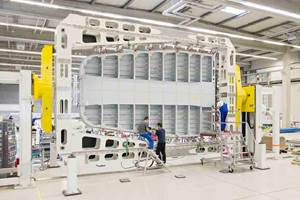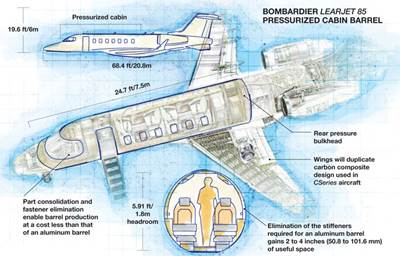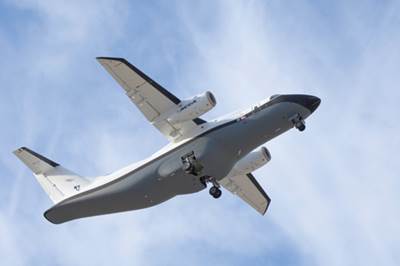Out-of-autoclave prepregs: Hype or revolution?
Oven-cured, vacuum-bagged prepregs show promise in production primary structures.
Producing aerospace composites without an autoclave, using vacuum-bag-only (VBO) atmospheric pressure, is nothing new. Vacuum-bagged, oven-cured material systems for secondary structures (flaps, fairings and the like) are well established. What is new is the ability for such materials to deliver the less than 1 percent void content and autoclave-quality mechanical properties required for aerospace primary structures, such as wings, fuselages and empennage components with integrated stiffeners.
Interest in OOA processing also has spurred the use of resin transfer molding (RTM), vacuum-assisted RTM (VARTM) and other liquid molding processes as well as the latest generation of compression molded thermoplastics (see “Aerospace-grade compression molding,” under "Editor's Picks," at top right). Although these processes are gaining acceptance among those who fabricate highly loaded structures, VBO prepregs, which encompass traditional hand layup as well as automated material placement methods, are of particular interest due to a combination of unique advantages.
The U.S. Air Force has identified OOA prepregs as vital to achieving the fast and affordable manufacturing that the U.S. Department of Defense (DoD) will require for future military platforms, and the Air Force sees additional cost savings when one OOA prepreg system can be used for prototyping, production and spares. Suppliers to commercial aircraft OEMs see OOA materials as a way to achieve manufacturing flexibility, freeing them from size constraints and enabling modular/cellular workflows.
Yet many issues remain. OOA cycle times might actually be longer, due to the time-dependent process of edge-breathing required for low void content. Other issues include compatibility of adhesives, surface quality of sandwich structures, and using automation in lay-up. Also, because these materials are new, a complete database of B-basis design allowables will have to be established, requiring time and money.
“Aside from the hype, is OOA a good tool?” asks Gail Hahn, Non-autoclave (Prepreg) Manufacturing Technology program manager at Boeing Research & Technology (St. Louis, Mo.), “Yes, but is it a game changer for all applications in the industry? Not necessarily.”
Why OOA prepreg?
OOA prepregs ensure even resin distribution, avoiding the dry spots and resin-rich pockets common with infusion processes. Also, OOA prepregs can be cured at lower pressures and temperatures (vacuum pressure vs. a typical autoclave pressure of 85 psi and cure at 200°F/93°C or 250°F/121°C vs. a traditional 350°F/ 177°C autoclave cure). Therefore, tooling for large composite structures with integrated stiffeners that can be cocured in a single cycle, which is typically very complex and expensive, now might be fabricated much more simply and cost-effectively. Further, mismatches between tool and part coefficients of thermal expansion (CTEs) are smaller at lower temperatures and, therefore, more easily managed, positioning OOA prepregs as a potential solution for part cracking caused by cure-temperature differentials.
One of the most widely cited OOA benefits is the potential to reduce high capital and operating costs. John Russell, Defense-Wide Manufacturing Science and Technology program manager for the Air Force Research Laboratory (AFRL, Wright-Patterson Air Force Base, Ohio), relates that NASA explored the costs of building a 40-ft by 80-ft (12m by 24m) autoclave to cure 10m/33-ft diameter launch vehicle barrels and found that it would cost roughly $40 million to build and another $60 million to install, plus the cost of nitrogen and power to operate it. DoD advisories indicate that future military aircraft programs will be produced in small volumes with very small budgets. Future NASA programs will be cost-constrained to an even greater degree. Russell points out that for NASA and for coming DoD programs, such as the Long Range Strike and Joint Future Theatre Lift (the latter a C-130 successor with planned 180-ft/55m wingspan and 140-ft/43m fuselage), “the challenge is how to deal with low production volumes —100 aircraft — while reducing capital requirements as much as possible.” The Air Force foresees a huge savings from the elimination of autoclave capital and operating costs.
Tier 1 suppliers to commercial aircraft OEMs agree, seeing OOA prepregs as a way to attain faster, more agile manufacturing. “We will pursue nonautoclave manufacturing for as many parts as is feasible in the future,” comments GKN Aerospace (Redditch, Worcestershire, U.K.) director of technology, Rich Oldfield. “We see it as a way to bring efficiency to the factory, including an entirely different workflow due to cellular manufacturing vs. large parts queued up for an autoclave.” GKN also sees this flexible manufacturing, which is less reliant on traditional manufacturing monuments, as critical to the task of achieving the forecast 60 to 70 percent composites content on the next generation 737 and A320 single-aisle jetliner programs.
A revolution 20 years in the making
According to Russell, AFRL and the Defense Advanced Research Projects Agency (DARPA) began to look at tooling prepregs and how they might be used to make prototypes in the Affordable Composites program during the mid-1990s. The first generation of OOA VBO materials, including Advanced Composites Group’s (ACG, Tulsa, Okla. and Heanor, Derbyshire, U.K.) LTM series, enabled cheaper, low-temperature vacuum-cure prototypes of large, unitized parts. Notable examples: Scaled Composites’ (Mojave, Calif.) SpaceShipOne, WhiteKnightOne and Global Flyer, Boeing’s X45A unmanned combat aerial vehicle (UCAV), DARPA/Lockheed Martin’s Darkstar, and the McDonnell Douglas Bird of Prey.
These early prepregs were cheaper because they cure at lower temperatures under vacuum pressure, but they had neither the mechanical properties nor the sufficiently short cycle times necessary for production parts.
By 2005-2006, two OOA prepreg systems — ACG’s MTM45 and Cytec Engineered Materials’ (Tempe, Ariz.) CYCOM 5215 — were approaching the properties of autoclave-cured prepregs. Both prepregs feature flexible cure cycles, requiring longer cure times at 150°F to 175°F (66°C to 79°C) but providing shorter two-hour cures at 250°F/121°C. Additionally, they achieve a wet Tg of more than 300°F/150°C after a 350°F/177°C freestanding postcure.
These systems achieved DARPA’s required <1 percent void content, but fell short elsewhere. The 10- to 12-day tack life and maximum 21-day open mold life were deemed insufficient by both AFRL and NASA because layup and bagging of large, complex structures require, at minimum, three to four weeks. Recently, however, ACG and Cytec have developed XMTM-47 and CYCOM 5320-1, respectively, targeted to a longer tack life of 21 days and minimum 30-day open mold life.
In 2007, the Disruptive Manufacturing Technologies Initiative began, with Non-Autoclave (Prepreg) Manufacturing Technology as one of five concentration areas. Cofunded by DARPA and Boeing, and executed with AFRL, the Non-Autoclave initiative’s established goal was to develop OOA systems that could provide the same performance as currently qualified autoclave-cure epoxy materials. ACG responded with MTM45-1, MTM-44 and MTM-46 and Cytec responded with CYCOM X5320. Boeing evaluated three experimental resin formulations, and selected X5320, which was later commercialized by Cytec as CYCOM 5320.
A range of demonstrator parts were built and subjected to limited nondestructive and dissection evaluations. HITCO Carbon Composites Inc. (Gardena, Calif.) built a 3.65m by 4.57m (12ft by 15 ft) hat-stiffened skin primary structure demonstrator. Aurora Flight Sciences of West Virginia (Columbus, Miss.) built a 38-ft/11.6m unmanned aerial vehicle (UAV) wing spar. (In a separate development, Aurora built a three-part, OOA-cured wing structure with a 150-ft/45.7m span for the Phantom Eye UAV demonstrator, which won top honors in Aviation Week’s Supplier Innovation awards competition, as a potential game-changer in the industry.). Boeing (Irvine, Calif.) built the boom and empennage for a 60 percent-scale demonstrator of the long-endurance Phantom Eye UAV, which is scheduled to begin flight trials in early 2011. Boeing has also submitted draft material specifications for carbon prepreg and a draft process specification, which are available to the public.
As part of the program’s Phase II, Boeing’s St. Louis operation manufactured 68-ft/21m parts, including a spar and three different wing skin configurations:
- A plank-stiffened skin, using Grafil (Sacramento, Calif.) HR 40 12K high-modulus carbon fiber;
- A hat-stiffened skin. using Cytec T40/800B intermediate modulus carbon unitape as well as high-strength fabric made from Cytec Thornel T-650/35 3K carbon fiber;
- A sandwich construction skin, using nonmetallic honeycomb core.
All were made with the same tooling, enabling Boeing to compare the finished panels in terms of quality, degree of production difficulty, inspectability and technology maturity level.
Perhaps the most successful demonstration of large OOA-cured structure to date is the Advanced Composite Cargo Aircraft (ACCA). When tasked by the Secretary of the Air Force to develop a new military transport aircraft with only $50 million and (indicative of DoD’s future intentions) 18 months to completion, Lockheed Martin (Ft. Worth, Texas) responded to an AFRL Broad Agency Announcement (BAA) competitive solicitation with a Dornier 328, cut off behind the cockpit to avoid the expense of developing new flight controls, and added an all-composite, 60-ft/18m long fuselage, built in eight pieces using ACG’s VBO-cured MTM-45 throughout the structure. Although the program ran seven months past its deadline, AFRL’s Russell, the program’s manufacturing engineer, says ACCA stayed on-budget and was a success (see "Advanced Composite Cargo Aircraft ....” under "Editor's Picks").
Ready but awaiting qualification
OOA prepregs have now reached physical property parity with autoclave-cure systems for primary aircraft structure, and several are already in qualification processes. The National Center for Advanced Materials Performance (NCAMP, Wichita, Kan.) has completed allowables testing for CYCOM 5215 and nine MTM45-1 product forms, including uni and woven quartz fiber, plain-weave G30-500 carbon fiber, high tensile strength (HTS) 12K carbon uni, E-glass, and 6781-style S-2 glass prepreg, with fiber supplied by AGY Holding Corp. (Aiken, S.C.) and woven by JPS Composite Materials Inc. (Anderson, S.C.). NCAMP testing of the same nine systems for MTM46 and also for CYCOM 5320-1 will soon be completed. ACG has announced that it will be releasing allowables for its XMTM47 system (“X” soon to be removed) in 2011 via its Lightweight Composite Structures (LCS) program with NAVAIR.
However, there is debate in the industry with regard to qualification and the availability of a complete allowables database. “We are at quite a high readiness level with our OOA technology and could deploy it into products relatively quickly,” says GKN’s Rich Oldfield, “except for the lack of availability of qualified materials, because there is no B-basis allowables database currently for any OOA prepreg system.” This FAA-approved statistical design data from composite lamina and laminate batch testing is a prerequisite to qualification for use in military or commercial aircraft primary structure. ACG’s VP of research and technology, Chris Ridgard, explains, “NCAMP does not run every test that defense airframers list as necessary.” It also does not run as many samples as defense programs require — approximately 1,400 to 1,500 vs. the 3,000 for defense qualification. “NCAMP tests materials and stores the values in a database, but only a specific defense platform can qualify a material for use on that vehicle” explains AFRL’s Russell. “It typically costs $3 million to $5 million to develop a complete B-basis allowables database, and none of the suppliers has stepped up to the plate just yet.” Russell notes that NCAMP testing offers data that is not held as proprietary by any one company or defense platform, such as that developed in the ongoing qualifications at Bombardier and Airbus.
Cytec product manager Mark Ostermeier says CYCOM 5320 and 5320-1 are being qualified in separate, proprietary programs. Cytec has announced it will supply carbon fiber composite materials for both primary and secondary structures on Bombardier’s (Montreal, Quebec, Canada) Learjet 85, and Bombardier reported that the pressurized fuselage will feature “a low-pressure, oven-cured, out-of-autoclave carbon fiber supplied by Cytec.”
ACG’s OOA materials are in qualification at Airbus. David Inston, project leader, out-of-autoclave technologies at Airbus’ Bristol, U.K. location, explains, “MTM44-1 is qualified with an Airbus specification for a particular 2x2 twill fabric. However, it is not fully qualified yet for a specific application.” Although this is a woven fabric specification and, therefore, will be used for secondary rather than primary structure, qualification is nearly complete and marks the first use of MTM44-1 for an actual aircraft part. Airbus has an agreement with GE Aviation (Hamble, U.K.) for the production of secondary wing structures for the A350, including wing access panels and trailing edge details. Inston notes that Airbus does have a specification published for an MTM44-1 unidirectional product, but no further qualification testing has been launched yet for a particular application, although a primary structure demonstrator has been built. “Airbus is in the process now of defining its road map to further develop OOA materials, including potential use in primary structures,” he adds.
Long time for low porosity
Manufacturers, however, warn against unreasonable expectations for OOA prepregs in production. Their reputation for “fast” prototyping, for example, might not translate to “fast” production, where void content goals can’t be compromised. ACG’s Ridgard explains that in OOA processing, removal of volatiles, which include not only air entrapped during layup but also the moisture (1 to 2 percent) that epoxies absorb when they are exposed to ambient air, involves an “edge-breathing” strategy. The laminate edges must be in contact with the breather and materials must be arranged in a way that maintains air escape paths. The vacuum bag materials and sequence are the same as with autoclave processing, but vacuum quality is vital, and because entrapped air extraction is a time-dependent process, OOA cure cycles are typically longer. Cytec recommends a vacuum hold before initiating cure for parts made using its OOA prepregs. This is in addition to any debulks required during layup and is performed without removing the bag prior to cure. Hold length depends on the part size and complexity, ranging from as low as four hours for a 2-ft by 2-ft (0.6m by 0.6m) part to 16 hours for a 20-ft by 40-ft (6m by 12m) structure with cocured hat stiffeners.
But John Cornforth, GKN Aerospace’s head of technology, cautions, “You have to be careful when you talk about OOA taking more time in vacuum, because some autoclave materials also require long vacuum times.” He notes that it is very hard to compare alternative systems because the specific process details of vacuum presssure, cure temperatures and cycle times become very dependent upon the specifics of each part.
ACG’s Ridgard asserts that the overall time penalty is really not any greater than with autoclave production: “If you cure MTM45-1 at 350°F [176°C], for example, you have to dwell at 250°F [121°C] for two hours because ramping too high too quickly drops the resin viscosity to where it will block off air paths. You are only adding two hours, plus you have the flexibility of a longer cure at 250°F [121°C] or 200°F [93°C], where the extra vacuum time is built-in, and then do a freestanding postcure to get the same properties.”
GKN, however, may have found a way around the extra cycle time. The company has developed microwave curing, which reduces typical cure cycles for both autoclave and OOA materials by up to 80 percent, to only 90 minutes. Microwaves reportedly heat only the composite structure, while the tooling and oven chamber remain cool, which drastically cuts heating and cooling time, as well as energy consumption. GKN sees an additional benefit in the ability to selectively cure parts of the structure, which could make integrating partially cured structures and then cocuring the final assembly possible in the future. GKN has begun technology readiness development, using ACG’s MTM materials, and is currently comparing traditional autoclave materials and processes with microwave curing, to define optimum parameters.
Sandwich surface and OOA adhesives
In its significant work with OOA-cured honeycomb-cored sandwich structures, ACG has identified some technical challenges. Chris Ridgard explains, “the bagging and layup techniques are basically the same as in autoclave curing, but venting of the core becomes important.” The high pressures used in autoclave curing, which do not permit air inside a honeycomb core to flow into skin laminates, are not present in OOA curing. Therefore, air must be removed from the core cells before the resin softens, because the lower OOA pressure might otherwise allow air to flow into the skin, resulting in high void content. Research performed at McGill University (Montreal, Quebec, Canada) and presented in a 2010 SAMPE paper shows that if pressure inside the honeycomb is reduced to 500 mbar (7.25 psi) or less prior to heating, the air does not escape into the facesheets. Instead, it remains in the core during the cure cycle. Ridgard says a lightweight glass fiber mesh (such as a 54 g/m2 or 1.6 oz/yd2 leno weave) is used as a breather to prevent skin disbonding due to pressure within the core. This technique was established at British Airways for composite repair more than 25 years ago (see “Old is new ...." sidebar, at the end of this article, or click on it under "Editor's Picks"). However, some believe it is not an optimal solution because the breather is laminated into the sandwich, increasing parasitic weight.
Air also can migrate into the faceskins due to foaming of the film adhesive, which compromises the adhesive fillet formation and resulting faceskin-to-core bond quality. Many common film adhesives for honeycomb sandwich will foam under the high vacuum levels used in OOA processing. ACG found that foaming was affected by film adhesive carrier type, honeycomb cell size and cure temperature. The company worked through these variables to develop MTA241, which is compatible with its MTM materials and will not foam during standard OOA cure cycles. “We see that a whole suite of OOA materials is needed for VBO processing,” says Boeing’s Hahn. AFRL’s Russell agrees, “Both film and paste adhesives compatible with OOA systems are needed. As OOA moves forward, the complete materials suite must all be compatible.”
Another issue for OOA honeycomb sandwich is to avoid surface pitting with single shot cures. “Surfacing film is required for a beautiful OOA sandwich surface,” says Hahn. On two recent 4-ft by 8-ft (1.2m by 2.4m) test panels where half used a surface film and half did not, the half with the film produced a better surface without surface porosity. ACG is not too concerned, because autoclave-cured sandwich structures often use a surfacing film as a carrier for copper mesh or other lightning strike protection (LSP) materials. ACG has developed MTM246 Surface Improvement Film for use with its OOA prepregs, while Cytec recommends its flexible-cure SurfaceMaster SM 905 product, which has been used in many OOA projects.
Higher impregnation for automation
Automation has become a critical area for OOA development. Fiber Placement of Out of Autoclave Composites is a 2009-2011 R&D program jointly funded by the Office of the Secretary of Defense (OSD), AFRL, Defense Logistics Agency (DLA), and the Office of Naval Research (ONR) Manufacturing Technology (ManTech) program. The Fiber Placement program’s chief goals are to develop the automated fiber placement (AFP) process for OOA materials, including specification of key process parameters, such as lay-down rate, and to demonstrate the process through fabrication of full-scale aerospace components. Participants include Boeing St. Louis, GKN Aerospace, HITCO Carbon Composites, Lockheed Martin, and Spirit Aerosystems (Wichita, Kan.). The program will use automated equipment from Electroimpact Inc. (Mukilteo, Wash.), Ingersoll Machine Tools (Rockford, Ill.) and MAG Industrial Automation Systems (Hebron, Ky.).
According to Ridgard, most OOA prepregs for hand layup incorporate dry fiber paths to some degree, which permit air extraction during cure but result in less than 100 percent impregnation. This is why OOA prepregs that use tightly woven E-glass or quartz fabrics are deliberately under-impregnated. However, materials used in AFP typically have higher degrees of impregnation. Cytec explains that OOA prepreg used in automated tape laying (ATL) is slit into 6-inch to 12-inch (152-mm to 305-mm) widths, which are not as sensitive as the typical 0.125-, 0.25-. or 0.5-inch (3.2-, 6.4- or 12.7-mm) narrow-width tapes used in AFP. There can be no dry fibers in the middle of these tapes because they will hang off the edges as the tape is layed, building up and then stripping off the tape edges during application. This is why OOA prepreg for AFP may have the same chemistry as VBO systems, but it often uses the highest level of impregnation possible.
Even so, it is assumed that the compaction forces of the AFP application head and its ability to lay materials down with pressure and heat will mitigate issues with entrapped air. Cytec still recommends the same vacuum hold as for hand layup OOA laminates. This and other issues are being explored in the aforementioned OSD Fiber Placement program, says Russell. “We are not sure if the pressure applied by the tape-laying head will block the air paths, which could result in porosity issues.” Both MTM-45 and CYCOM 5320-1 will be evaluated in fighter wingskin-sized parts made using AFP. The program will compare various types of automated equipment and will track the lay-down time in the same manner for each demonstrator part, using standards developed by the Joint Strike Fighter (JSF) program.
GKN Aerospace applied more than 10 years of experience with automated layup of OOA materials to produce a 10.5m/34.5-ft long, full cross-section carbon fiber composite wing spar demonstrator, similar to the front and rear wing spars it supplies for the A400M, as part of the 2005-2009 Airbus-led Advanced Low-Cost Aircraft Structures (ALCAS) program. An MTorres (Torres de Elorz, Spain) gantry-mounted 11-axis high-speed tape-layer-applied HTS 268 g/m2 (8 oz/yd2) carbon fabric MTM44-1 prepreg. This “flat pack” was then robotically transferred to a carbon fiber tool, placed in a double-diaphragm forming press, and shaped into a C-section in 20 minutes. The shaped spar laminate was then bagged and cured using only vacuum pressure with heat supplied by electrical elements integrated into the tool, and an initial cure of 130°C/266°F with a 180°C/356°F postcure. The 27-mm/1.1-inch thick spar showed less than 2 percent porosity. It is being tested at
Airbus UK.
Heated tools have been GKN’s conventional approach to OOA curing. “An electrically or fluid-heated tool enables you to avoid both autoclaves and oven,” says Rich Oldfield. “It also allows more accurate control of the curing process, including local heating to accommodate parts with different thicknesses, eliminating hot and cold spots.” Even though an integrally heated tool costs slightly more than a standard tool, GKN believes the benefits of greatly reduced cycle time and freedom from monument constraints deliver an overall economic gain. This technology also is much more conducive to higher-rate manufacturing.
Critics contend that automated layup is again dependent on large capital costs, and is really just swapping out one monument for another. But GKN has already made the machine investment, and sees very significant cost savings in combining automated layup with OOA curing. Automated layup also might serve to reduce the burden of 100 percent inspection typical for hand layup because of the use of prepreg backing film.
BMIs and beyond
The development of OOA bismaleimide (BMI) systems has been a “quiet revolution” in OOA processing development. Or it was until Russell claimed, “This needs to be a goal for everyone,” at the Fall SAMPE conference in Salt Lake City, Utah. ACG announced via presentations in May that it is developing an OOA BMI and stated that it would finalize candidates by the end of 2010 and generate data in 2011. Cytec also says it will develop an OOA BMI.
For 17 years, Maverick Corporation (Blue Ash, Ohio) has produced polyimide resins, which they sell to prepreggers like Renegade Materials Corp. (Dayton, Ohio). Maverick and Renegade, in fact, have worked closely together since 2008 and were recently joined by Akron Polymer Systems Inc. (Akron, Ohio) and NASA Glenn (Cleveland, Ohio) as partners in an OOA Materials for High-Temperature Composite Applications project. The effort benefits from a recently awarded Third Frontier Grant from the U.S. state of Ohio. The team’s contribution and Ohio’s matching funds will total $2 million over two years, during which BMI and polyimide systems will be developed for service temperatures of 400°F to 700°F (204°C to 371°C).
Dr. Robert Gray, Maverick president and director of product development, reports that polyimides enable service temperatures between 400°F/204°C and 700°F/371°C and cost $100/lb to $250/lb, while BMI resins provide up to 350°F/177°C hot/wet performance and cost $70/lb to $100/lb. But processing BMI resins is a little easier because, unlike polyimides, they do not form reaction byproducts, such as water and alcohol, during cure. Gray believes that most fabricators are limited to processing only BMI materials for high-temperature applications. However, Gray plans to reduce the complexity of processing polyimides by moving away from very low viscosity resins toward systems of greater molecular weight, formulated for VBO-curing prepregs.
Military applications for polyimide composites include stator vanes leading into the compressor in jet engines, exhaust flaps in back of the engines, and outer bypass ducts. Polyimide structures also can handle extreme environments in and around commercial aircraft engines. Maverick and Renegade have identified many structural applications for polyimides, including UAV and low-observable applications. By offering more affordably processed OOA polyimides, Maverick’s program could help aircraft designers cut weight by reducing the need for insulation and shielding, especially on launch vehicles and other space platforms where weight is super critical.
Currently, PMR-15 (supplied by Cytec as CYCOM 2237), the industry-standard polyimide, requires autoclave cure at 200 psi/13.8 bar. Gray explains, “Very few composites manufacturers have large, high-temperature autoclaves. If we can process polyimides out-of-autoclave, we could dramatically expand the high-temp composite parts supplier base and broaden the use of these lightweight materials.”
But what is the driver for an OOA BMI? According to industry consultant Jeff Hendrix, most BMI and polyimide parts that require performance above ~275˚F/~135˚C are used in engines, and don’t typically need to be large. These parts fit into current autoclaves, and most, in fact, are compression molded. “It’s not the upper use temperature that drives selection of BMIs, but the superior notched properties at even lower temperatures that makes them attractive to many programs,” Hendrix explains, adding, “What’s really desired is an OOA system that can match BMI notched properties in the 180°F to 250°F (82°C to 121°C) range, which would ideally be an epoxy-based system.”
AFRL’s Russell agrees, noting that “5250-4 BMI [produced by Cytec] was used heavily in the JSF [program], even where no elevated service temperature was needed, simply because it was able to deliver higher stiffness-to-weight and strength-to-weight ratios due to its hot/wet performance, which means lighter structures.”
Russell also sees the need for higher temperature performance in future programs: “Some concepts for the Joint Future Theater Lift vehicle show an aircraft resembling a giant F-22, with engines embedded next to the fuselage, dumping exhaust across the horizontal tail surfaces. Temperatures for these primary structures likely will exceed epoxy capability. Thus, OOA BMIs are of interest to us.” Russell says that NASA has an interest because the use of BMI in the nose-cone of its launch vehicles could eliminate costly, heavy insulation materials. Eliminating that weight alone could justify BMI’s extra cost, not to mention the material and labor reductions. “We have a $600,000 program with Stratton Composites Solutions (Marietta, Ga.) to look at developing an out-of-autoclave BMI,” notes Russell.
Boeing’s Hahn says some people don’t see much benefit in an OOA BMI but others do, and she can see both sides. “But as an airframer,” she says, “I would ask material suppliers if they have an OOA BMI that achieves sufficient green strength at reasonably low cure temperatures because in-use temperature needs usually go up not down as new programs develop.”
No more autoclaves?
Mark Shuart, senior advisor for Composites & Structures at NASA Langley (Hampton, Va.), remarks that when 10m/33-ft diameter sections are demonstrated successfully using OOA processing, aerospace composites manufacturing will never be the same. But others say it’s not that simple. “For the technology to be adopted, it will have to make economical sense,” says Hahn. Hendrix agrees. “If your production program already has an autoclave and a materials database, you simply cannot make a business case for looking at OOA,” he argues. “It only makes sense in the case of going from prototyping to production more economically or reducing tooling complexity for large cocured structures.”
“OOA will become more predominant,” predicts Cytec’s Mark Ostermeier, but he warns that the aerospace industry will remain conservative. “Bombardier’s LearJet has taken a major step by pursuing an all-composite OOA fuselage,” he observes, “but most manufacturers of large commercial structures will probably wait and see.”
Ostermeier sees military aerospace moving toward OOA faster than commercial aircraft, and if NASA does produce out-of-autoclave launch-vehicle sections reliably, he predicts that it could change composites manufacturing quite a bit. Hendrix maintains his skepticism, “I believe OOA has a bright future, but people should be careful because they think it is so much cheaper.”
For Hahn, however, the issue is OOA’s utility in real-world production vs. R&D programs, where the driver for decision-making often is a program deadline. “The OOA materials we are looking at right now cost the same as the autoclave primary structure materials in use,” she notes. “But if they allow us to complete tooling in six weeks, and then proceed to prototyping and production much more quickly, it could win in trade studies for an application.”
Related Content
VIDEO: One-Piece, OOA Infusion for Aerospace Composites
Tier-1 aerostructures manufacturer Spirit AeroSystems developed an out-of-autoclave (OOA), one-shot resin infusion process to reduce weight, labor and fasteners for a multi-spar aircraft torque box.
Read MoreFrom the CW Archives: Airbus A400M cargo door
The inaugural CW From the Archives revisits Sara Black’s 2007 story on out-of-autoclave infusion used to fabricate the massive composite upper cargo door for the Airbus A400M military airlifter.
Read MoreCompPair adds swift prepreg line to HealTech Standard product family
The HealTech Standard product family from CompPair has been expanded with the addition of CS02, a swift prepreg line.
Read MorePEEK vs. PEKK vs. PAEK and continuous compression molding
Suppliers of thermoplastics and carbon fiber chime in regarding PEEK vs. PEKK, and now PAEK, as well as in-situ consolidation — the supply chain for thermoplastic tape composites continues to evolve.
Read MoreRead Next
Learjet 85 composite pressurized cabin a cost cutter
Single-piece carbon fiber composite structure selected over multipiece aluminum fuselage barrel section in new bizjet design.
Read MoreAdvanced Composite Cargo Aircraft proves large structure practicality
Dr. John Russell reports that the successful completion of a flying aircraft in the the Advanced Composite Cargo Aircraft program has demonstrated the holistic impact that composites technology can have on future aircraft development.
Read More

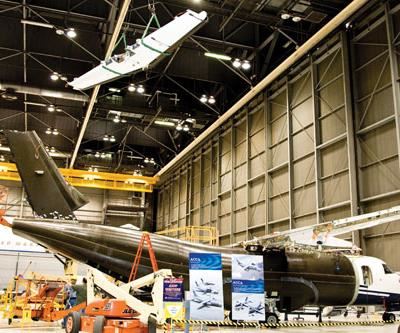
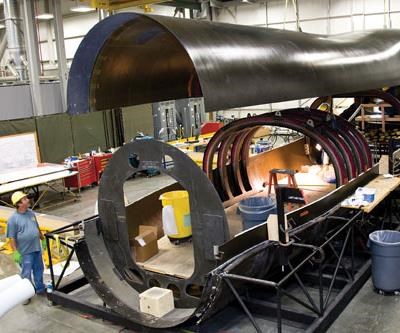
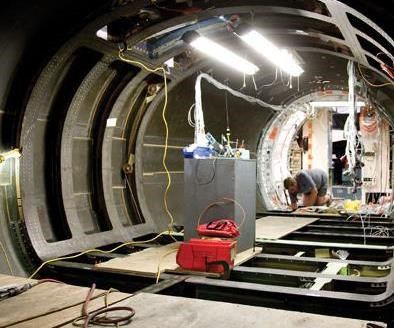
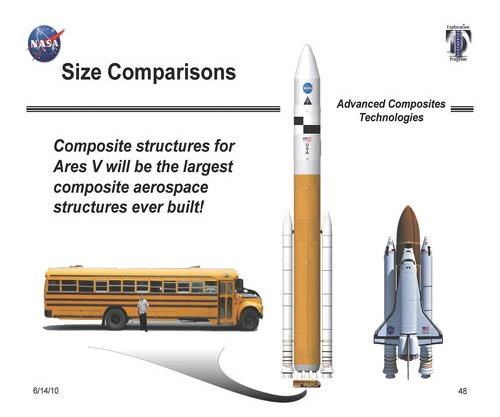
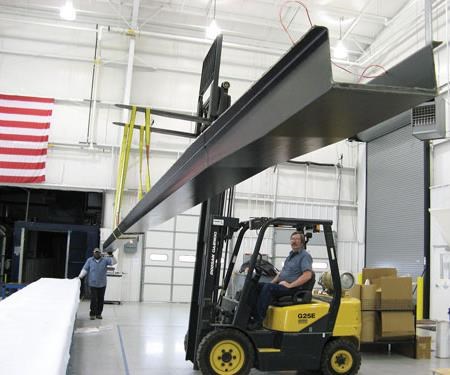
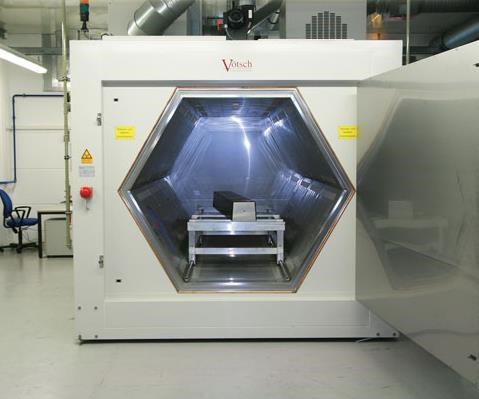












.jpg;maxWidth=300;quality=90)

